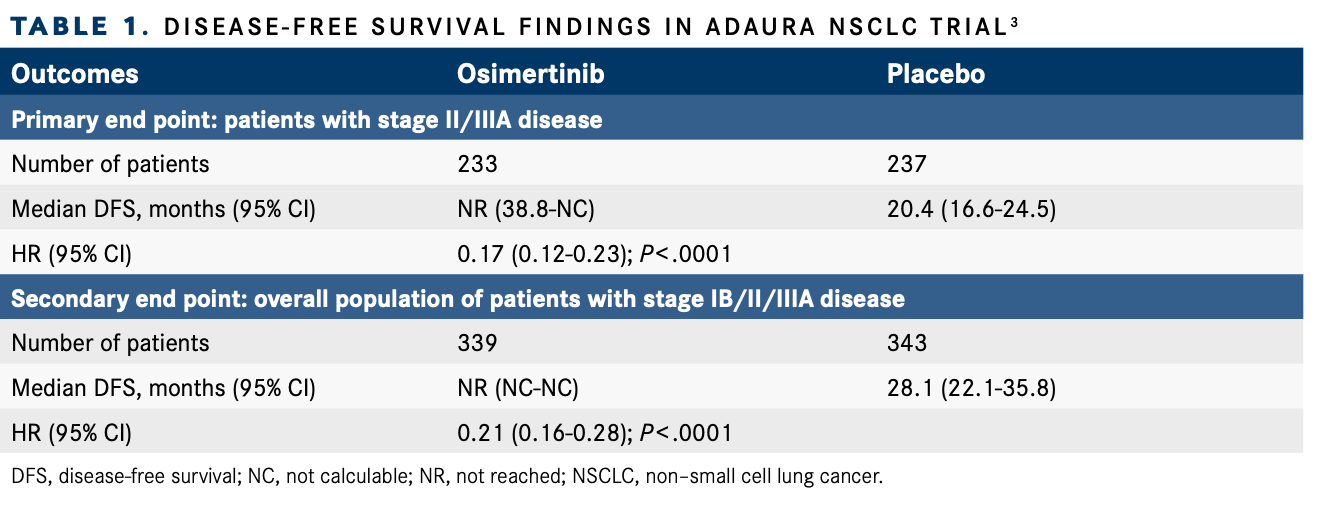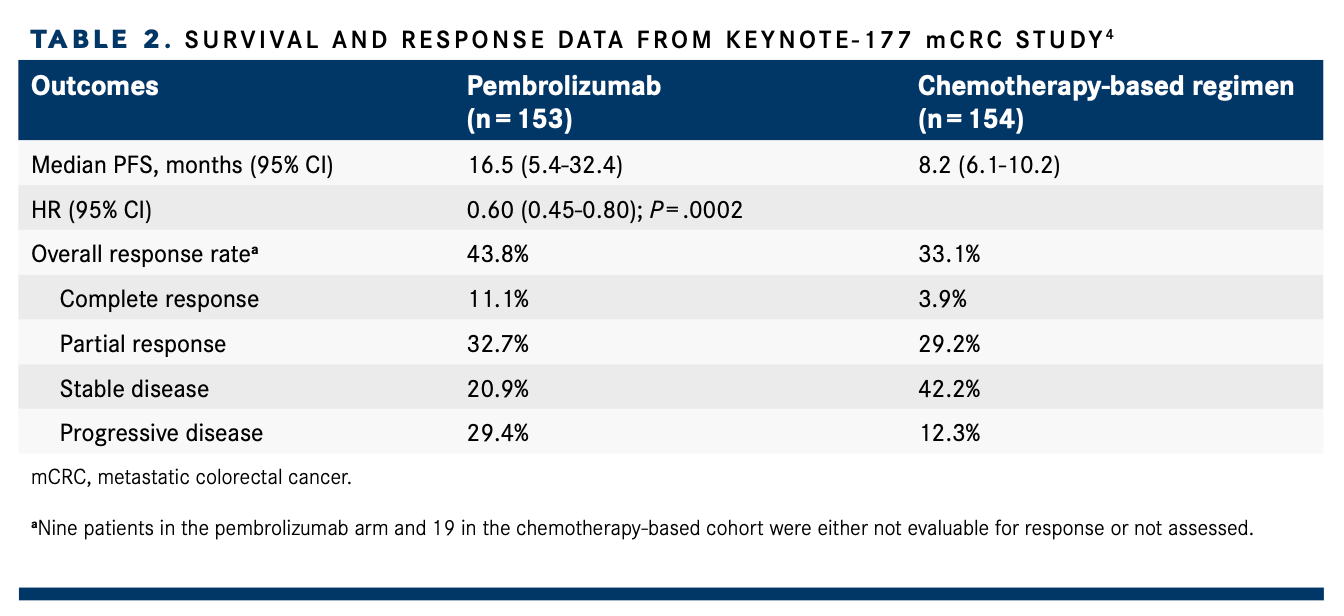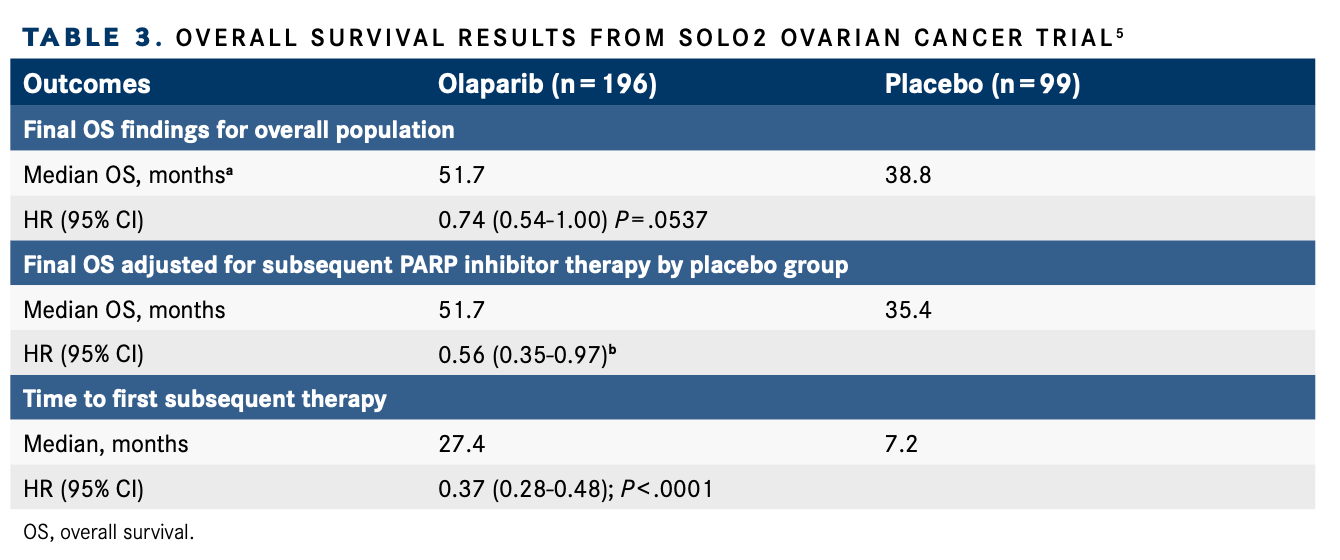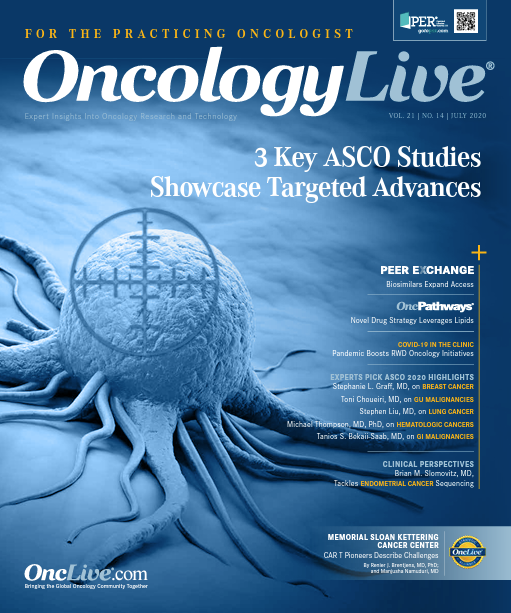Publication
Article
Three Key ASCO Studies Showcase Targeted Advances
Author(s):
Molecularly targeted therapies showed practice-changing results for patients with biomarker-driven lung, colorectal, and ovarian cancers in phase 3 randomized clinical trial findings.
Mark G. Kris, MD

Molecularly targeted therapies demonstrated practice-changing results for patients with biomarker-driven lung, colorectal, and ovarian cancers in phase 3 randomized clinical trial findings featured at the 2020 American Society of Clinical Oncology (ASCO) Virtual Scientific Program. Data from the 3 noteworthy stud- ies strengthen the rationale for genomic profiling, experts say.
The findings come against a backdrop of the continuing growth of anticancer therapies for patients whose malignancies harbor a genomic aberration. In 2019, 13 of the 38 FDA approvals for oncology indications required testing for a molecular alteration.1 So far this year, 18 of 38 new or expanded approvals for oncology and hematology indications are linked to genetic or protein biomarkers, according to an FDA database search.2
The ASCO 2020 research that is expected to have an impact on the treatment landscape in the 3 malignancies stems from the following studies:
- ADAURA (NCT02511106): Osimertinib (Tagrisso) significantly improved disease-free survival (DFS) compared with placebo as adjuvant therapy for patients with early-stage, EGFR-mutant non–small cell lung cancer (NSCLC) who had undergone complete resection.3 The regimen has the potential to enhance curative outcomes for this population.
- KEYNOTE-177 (NCT02563002): Pembrolizumab (Keytruda)
boosted progression-free survival (PFS) compared with standard-of-care chemotherapy as a frontline treatment for patients with microsatellite instability-high (MSI-H)/mismatch repair–deficient (dMMR) metastatic colorectal cancer (mCRC).4 The FDA approved a new indication for pembrolizumab on June 29, 2020 based on the trial results.2 - SOLO2 (NCT01874353): Olaparib (Lynparza) delivered a 12.9-month median overall survival (OS) benefit compared with placebo as maintenance therapy for patients with BRCA-mutant, platinum-sensitive recurrent ovarian cancer. Investigators said the improvement in this setting is “unprecedented.”5
Although clinicians have incorporated the biomarker-driven strategies evaluated in these trials into the treatment landscapes for these malignancies, the findings propel their use into more areas and highlight the clinical utility of molecular profiling, particularly in NSCLC and mCRC. In NSCLC, the ADAURA findings indicate the need for testing before patients reach advanced stages of disease, an approach that current practice does not reflect, Mark G. Kris, MD, a medical oncologist who helped pioneer the molecular characterization of NSCLC, said in an interview with OncologyLive®.
"Every single [patient] who has surgery is going to need a molecular test,” said Kris, the William and Joy Ruane Chair in Thoracic Oncology at Memorial Sloan Kettering Cancer Center in New York, New York. “Up to today, that has not been a standard of care, and in the course of doing that, we’re going to find patients with EGFR mutations, and we know what to do with them, but we’re [also] going to find [patients] with other mutations and abnormalities, and that’s going to open a door for those [patients].”
In gastrointestinal (GI) malignancies, the KEYNOTE-177 results show that molecular testing for MSI-H/dMMR and other aberrations can identify targets with the potential to deliver clinically meaningful improvements for patients, Tanios S. Bekaii-Saab, MD, said in an interview. “I don’t think anymore that genomic sequencing is a privilege—it should be a right [for] every single patient with a GI malignancy and, specifically, colon cancer,” Bekaii-Saab, vice chair and section chief of medical oncology at Mayo Clinic in Phoenix, Arizona, said in an interview. “We have to find every way possible to get [GI tumors] sequenced.”
In ovarian cancer, the SOLO2 data cement the role of olaparib and other PARP inhib- itors in the treatment armamentarium for patients with BRCA mutations, said David M. O’Malley, MD, director of the Division of Gynecologic Oncology at The Ohio State University Comprehensive Cancer Center—James in Columbus. “Clearly, any BRCA patient who has not received a PARP inhibitor at recurrence should then receive a PARP inhibitor in the maintenance setting after platinum-based chemotherapy,” he said in an interview. The following information provides a more detailed look at these studies.
Osimertinib As Adjuvant NSCLC Treatment
Despite the many innovations in therapies for advanced NSCLC in the past 2 decades, investigators are still seeking to improve the cure rate for patients with early-stage disease, who typically undergo surgery followed by cisplatin-based chemotherapy, if appropriate, but then face high recurrence rates.3 Patients with localized/early-stage disease have a 5-year recurrence rate of 45% at stage IB, and those with regional/locally advanced cancer have recurrence rates of 62% at stage II and 76% at stage III, Roy S. Herbst MD, PhD, said in presenting the ADAURA data at ASCO 2020. He said approximately 30% of patients with newly diagnosed NSCLC present with poten- tially resectable disease.3
“It is clear that there remains an unmet need for novel and effective adjuvant therapies to improve clinical outcomes in the early-stage non–small cell lung cancer setting,” said Herbst, the Ensign Professor of Medicine (Medical Oncology) and chief of medical oncology at Yale Cancer Center and Smilow Cancer Hospital and associate cancer center director for translational research at Yale Cancer Center, both in New Haven, Connecticut.
Although tyrosine kinase inhibitors (TKIs) directed at EGFR-mutant NSCLC have changed the paradigm for patients with advanced and metastatic disease, their role as adjuvant therapy needs clarification. Overall, EGFR mutations have been detected in approximately 10% to 15% of patients with NSCLC in the United States and Europe and up to 40% of patients in Asia.6 Osimertinib, a third-generation EGFR inhibitor, is approved in 2 metastatic NSCLC settings: as first- line treatment for patients whose tumors harbor EGFR exon 19 deletions or exon 21 L858R mutations and for those with EGFR T790M resistance mutations and whose disease has progressed after prior EGFR-directed TKI therapy. In ADAURA, 682 patients with EGFR-mutant stage IB, II, or IIIA disease were randomized to receive osimertinib 80 mg daily versus placebo. Patients received treatment for 3 years or until disease recurrence or discontinuation criteria were met. The primary end point was investigator-assessed DFS in patients with stage II or IIIA disease.
Findings reported at ASCO 2020 were from an unplanned interim analysis with a data cutoff of January 17, 2020; all patients were followed for at least 1 year, including 65% for at least 2 years and 30% for at least 3 years. In patients with stage II or IIIA disease, the median DFS for those who received osimertinib (n = 233) was not reached (NR; 95% CI, 38.8–not calculable [NC]) compared with 20.4 months (95% CI, 16.6-24.5) for those who received placebo (n = 237). Osimertinib therapy delivered an 83% reduction in the risk of disease recurrence (HR, 0.17; 96% CI, 0.12-0.23; P < .0001). In the overall study population, the median DFS for participants who received osimertinib (n = 339) was NR (95% CI, NC-NC) versus 28.1 months (95% CI, 22.1-35.8) for those who took the placebo (n = 343), which translated into an HR favoring osimertinib therapy of 0.21 (95% CI, 0.16-0.28; P < .0001) (Table 1).3
The findings marked the first time a targeted agent demonstrated a statistically significant and clinically meaningful improvement in this population during
a global randomized trial, Herbst noted. “These numbers were fantastic,” he said in an interview. “We assumed that these agents would be active, but [we didn’t realize it would be] to this extent. These data speak to the fact that these are more active third-generation agents that are more potent in areas such as the brain and the central nervous system, and they are better tolerated; patients can take them for longer [durations].”
Herbst added that the data would change practice. “I think that [the study] really heralds a new age for how we’re treating this disease,” he said. “We’re in a precision-guided world, and we have ways to target the patients with the right drug at the right time—and that time is now, an earlier time in the disease.”
Preventing metastases with molecularly targeted therapy, Herbst continued, “is a paradigm that I feel is going to be so important as we move forward in the treatment of this deadly disease.” In keeping with that message, Herbst said the results show a need for more molecular sequencing, at least for patients with nonsquamous disease, so that clinicians can identify potential therapeutic targets earlier in the treatment timeline.
Kris said expanding testing into an earlier setting for patients who undergo surgery would not be problematic because tissue would be available and an additional biopsy would not be needed. “This is a trial that will truly change how we care for [patients] with EGFR-mutant lung cancer,” he said. “I think all the patients with an EGFR mutation and a successful lung cancer surgery will be offered osimertinib after the conclusion of chemotherapy, if appropriate by their stage, and radiation, if appropriate by their stage.”
Meanwhile, the T790M resistance mutation that osimertinib initially was designed to address would no longer be a consideration if patients receive the drug in the front line, Kris said. “The T790M mutation can develop [only] if you give a drug that does not attack it. What we’re seeing now is that [patients] who get osimertinib as initial therapy just don’t get [the mutation]. We’re not going to see it going forward,” he said.
AstraZeneca, the company developing osimertinib, plans to submit the ADAURA findings for regulatory approvals.6
Table 1. Disease-Free Survival Findings in ADAURA Trial3

Pembrolizumab For Frontline mCRC Therapy
The importance of MSI-H/dMMR as a predictive biomarker has been growing since 2017, when the FDA granted pembrolizumab an accelerated approval for patients with unresectable or metastatic solid tumors that test positive for the marker, have progressed after prior treatment, or for which no acceptable alternatives exist. The FDA also approved the PD-1 immune checkpoint inhibitor specifically for patients with MSI-H/dMMR mCRC that has progressed after treatment with a fluoropyrimidine, oxaliplatin, and irinotecan.7
Colorectal cancers that are MSI-H/dMMR, which is the result of defective DNA repair mechanisms, comprise 15% of colorectal cancers, including 5% of patients with metastatic disease, according to Thierry André, MD, a professor of medical oncology at Sorbonne Université and Hôpital Saint-Antoine in Paris, France, who presented the KEYNOTE-177 results at ASCO 2020.4
In KEYNOTE-177, investigators sought to establish a frontline benefit for pembrolizumab over standard-of-care regimens for this patient population. Eligible patients had treatment-naïve stage IV mCRC with confirmed MSI-H status by polymerase chain reaction testing or dMMR status by immunohistochemistry testing.
In all, participants were randomized 1:1 to receive either pembrolizumab (n = 153) 200 mg every 3 weeks for up to 35 cycles or investigator’s choice of chemotherapy regimen (n = 154). The control arm choices were modified FOLFOX6 [oxaliplatin, leucovorin, fluorouracil] or FOLFIRI [irinotecan, fluorouracil, leucovorin] with or without either bevacizumab (Avastin) or cetuximab (Erbitux). Patients in the chemotherapy arm were permitted to cross over to the immunotherapy group. The primary end points were PFS per blinded independent central review and OS.
After a median follow-up of 32 months, the median PFS with pembrolizumab was 16.5 months (95% CI, 5.4-32.4) compared with 8.2 months (95% CI, 6.1-10.2) for the standard-of care arm. Those findings translated into an HR of 0.60 (95% CI, 0.45-0.80; P = .0002). The PFS rate for participants who received pembrolizumab versus chemotherapy was markedly higher, at 12 months (55% vs 37%, respectively) and 24 months (48% vs 19%, respectively). The overall response rate also was higher with pembrolizumab than with chemotherapy (43.8% vs 33.1%, respectively), as was the median duration of response (NR vs 10.6 months, respectively) (Table 2).4
“In the past, no medical treatment has shown such a difference in terms of improvement of PFS in metastatic colorectal cancer,” André said. “The study demonstrates that the majority of the 5% of patients with metastatic colorectal cancer selected by MSI status benefited greatly with the anti–PD-1 pembrolizumab compared with standard of care.”
OS findings are not yet mature; investigators will conduct a final analysis when
190 events are reached or 12 months after the second interim analysis. André said the OS results may be affected by the fact that 59% of patients in the chemotherapy arm either crossed over during the trial to receive pembrolizumab or subsequently had anti–PD-1/PD-L1 therapy.
Of note, pembrolizumab therapy was less effective in rate of progressive disease, which was 29.4% with immunotherapy versus 12.3% with chemotherapy.4 “This clearly suggests that almost one-third of patients are demonstrating intrinsic resistance to PD-1–based therapy and are not benefiting from pembrolizumab,” said Michael J. Overman, MD, who served as a discussant for the abstract. He also noted that patients with an ECOG performance status score of 0 had a better PFS result with pembrolizumab than did those with a score of 1 (HR, 0.37 vs 0.84, respectively). In addition, more PFS events occurred in the pembrolizumab arm than in the chemotherapy group in the early months of the trial.8
“Who these patients [are] is a critical question,” said Overman, a professor in the Department of Gastrointestinal Medical Oncology at The University of Texas MD Anderson Cancer Center in Houston. “With this progression disease rate and initial hazard ratio favoring chemotherapy over pembrolizumab in the first 6 months of therapy, what is the correct approach for symptomatic patients at risk of disease-related complications or patients with poor performance status? For example, ECOG performance status 2 or 3. At present, the NCCN [National Comprehensive Cancer Network] recommends considering immune therapy for [patients with] poor performance status in the front line.”
Meanwhile, the toxicity profile of pembrolizumab was more favorable than that of chemotherapy; the adverse events (AEs) observed with each regimen were different but consistent with prior experience, André said. Grade 3 or greater treatment-related AEs were observed in 22% of patients who received pembrolizumab compared with 66% who had chemotherapy. The incidence of frequent all-grade AEs that were lower with pembrolizumab than with chemother- apy, respectively, included diarrhea (25% vs 52%), fatigue (21% vs 44%), and nausea (12% vs 55%). However, the occurrence of immune-mediated AEs and infusion reactions of grade 3 or greater severity were higher with pembrolizumab (9%) than with chemotherapy (2%).4
“Pembrolizumab should be the new standard of care for these patients,” André said. “These data will present another step forward for biomarker-driven studies and will help bring this approach that targets MSI-high tumors into the adjuvant and neoadjuvant settings.”
The findings are highly significant for this patient population, particularly for those with colon cancer, Bekaii-Saab said. “This essentially transforms [mCRC] from a disease where we have to try chemotherapy first and fail before we go to immune therapy to [a paradigm with] patients getting immune therapy first.”
For many of the patients who respond to pembrolizumab therapy, the benefit is durable, Bekaii-Saab added. “I don’t like to use the word loosely in stage IV disease, but this is the equivalent of a cure, with remissions that are durable [and patients who] may never see chemotherapy in their life-times,” he said. Bekaii-Saab noted that 2 schools of thought exist regarding whether pembrolizumab will deliver an OS benefit over chemotherapy in this setting. “The first scenario, which a lot of people are predicting, is that the survival is not going to be much different between pembrolizumab given first versus chemotherapy. The reasoning for that is that a lot of people are saying when you give chemotherapy first, when patients progress, they are going to have access to pembrolizumab. The thought is that whether you give it first or later [will not] change overall survival,” he said.
However, Bekaii-Saab added, others believe that introducing immunotherapy sooner will be beneficial. “Because this appears to be a game changer, the sooner you change or you attack the biology of the cancer, the better you do in the long run, and therefore, you will affect survival positively.”
In his practice, Bekaii-Saab has already treated patients with MSI-H/dMMR disease with pembrolizumab in the first line, and he has considered it for biomarker-selected patients with other GI malignancies. Even if the OS findings of KEYNOTE-177 do not meet the statistical threshold for significance, the regimen has earned its frontline status, he said.
“If the survival is positive, that’s great; that just consolidates the story. If the survival is borderline better with pembrolizumab versus overall survival with chemotherapy, when you look at the big story, the big package, of prolonging life, the quality of life is much better,” Bekaii-Saab said. “I think it has changed the landscape of how we treat MSI-high colorectal cancer. This has transformed the way we treat MSI-high tumors period, beyond colorectal cancer.”
The challenge now, he added, is to determine why 60% of the patients do not respond to immunotherapy.
Table 2. Survival and Response Data From KEYNOTE-177 mCRC Study4

Olaparib in Ovarian Cancer Maintenance
Although investigators have conducted many clinical trials in ovarian cancer over the past 2 decades, “limited progress has been made in improving overall survival,” Andrés Poveda, MD, lead author of the SOLO2 study, said in presenting the findings at ASCO 2020.
Olaparib, the first PARP inhibitor to gain FDA approval, in 2014, was cleared for use in the maintenance setting for patients with BRCA-mutated advanced epithelial ovarian, fallopian tube, or primary peritoneal cancer who are in complete or partial response to first-line platinum-based chemotherapy on December 19, 2018, based on PFS findings from the SOLO-1 trial (NCT01844986).9
For SOLO2, Poveda and colleagues reported the final OS results from a clinical trial launched in September 2013 that evaluated maintenance olaparib administered at 300 mg twice daily versus placebo in patients with BRCA-mutant, high-grade serous or endometrioid ovarian cancer who had received 2 or more lines of platinum-based chemotherapy. Participants were required to show a complete or partial response to the most recent platinum regimen. The primary end point was investigator-assessed PFS; OS was included among the time-dependent secondary end points.5
In 2017, investigators reported that patients who received olaparib achieved a median PFS of 19.1 months (95% CI, 16.3- 25.7) compared with 5.5 months (95% CI, 5.2-5.8) for those who took a placebo (HR, 0.30; 95% CI, 0.22-0.41; P < .0001).10
For the final OS results, the median duration of follow-up was 5.5 years for the olaparib group and 5.4 years for those who received a placebo. In the overall trial population, median OS for patients who received maintenance olaparib (n = 196) was 51.7 months versus 38.8 months among those who took a placebo (n = 99), which translated into an HR for death 0.74 (95% CI, 0.54-1.00; P =.0537).5
The benefit of olaparib was more extensive when findings were adjusted to reflect that 38% of patients in the placebo group subsequently received PARP inhibitor therapy. In this analysis, the median OS was 51.7 months for the olaparib group compared with 35.4 months for the placebo cohort (HR, 0.56; 95% CI, 0.35-0.97) (Table 3).5 “SOLO2 is the first phase 3 trial of maintenance PARP inhibitor therapy to report an overall survival rate for women with platinum-sensitive relapsed ovarian cancer and a BRCA mutation since the introduction of platinum-based chemotherapy,” said Poveda, of Initia Oncology, Hospital QuirÓnsalud, in Valencia, Spain.
Beyond the OS findings, Poveda noted, data on the secondary end point of time to first subsequent therapy showed a dramatic clinical benefit with olaparib therapy. “It is remarkable that at 5 years, 28% of patients in the olaparib group were alive and had not received subsequent therapy based on Kaplan-Meier estimates,” he said. “The median time to subsequent therapy was 27.4 months in the olaparib group and 7.2 months in the placebo group. The hazard ratio was 0.37, with a P value of less than .0001.”
In terms of AEs, Poveda said few additional effects stemmed from longer-term olaparib therapy. Treatment-emergent AEs for the olaparib cohort in the final analysis compared with the primary analysis, respectively, led to dose interruptions for 50% versus 45% of participants, as well as treatment discontinuations for 17% versus 11%. Overall, 22% of patients took maintenance olaparib for 5 or more years.
An AE of special interest was the development of myelodysplastic syndrome (MDS) or acute myeloid leukemia (AML). In the primary analysis, 2% of patients who received olaparib and 4% of those in the placebo arm developed MDS or AML whereas the final analysis showed 8% and 4% in the treatment arms, respectively, with those malignancies.
“The length of time since diagnosis [and] the duration of PARP inhibitor therapy are probably relevant,” said Susana N. Banerjee, MBBS, PhD, who served as a discussant on the abstract. Banerjee noted that in the SOLO1 trial, in which patients with BRCA mutations received olaparib versus placebo as first-line maintenance therapy after platinum-based chemotherapy for approximately 2 years, the incidence of MDS/AML was “much lower,” at 1% versus 0% in the placebo arm.11
“This is the first study of longtime olaparib tablet toxicities in patients who have been receiving it for some time,” said Banerjee, a consultant medical oncologist with The Royal Marsden in London, United Kingdom. “It’s important to look at the final analysis of toxicities in patients that have had long-term treatments, looking at new onset and persistent toxicities. It’s going to be very important for us to understand the risk factors of MDS and AML better and, for other phase 3 maintenance studies, to actively capture the rates of MDS and AML beyond the study treatment for our period.”
Putting the SOLO2 findings into perspective, O’Malley, The Ohio State University specialist, said the trial “is one of the most impactful studies” in the field. “As we know, it’s extremely difficult to show an overall survival benefit in patients with ovarian cancer for multiple factors, one of which is the long-term survival and the multiple agents that they will see during their course of treatment,” he said.
“We can debate whether [SOLO2] is statistically significant with the adjustment or the unadjusted [data] for crossover, but clearly there is a clinically significant improvement of nearly 13 months [for olaparib vs placebo], and an overall survival benefit essentially unheard-of in ovarian cancer is impactful in this patient population,” O’Malley said.
Table 3. Overall Survival Results From SOLO2 Ovarian Cancer Trial5

References:
- Jones SF, McKenzie AJ. Molecular profiling in drug development: paving a way forward. Am Soc Clin Oncol Educ Book. 2020;40:e309-e318. doi:10.1200/EDBK_100024
- Hematology/oncology (cancer) approvals & safety notifications. FDA. Updated July 8, 2020. Accessed July 14, 2020. https://www.fda.gov/drugs/resources-information-approved-drugs/hematologyoncology-cancer-approvals-safety-notifications
- Herbst RS, Tsuboi M, John T, et al. Osimertinib as adjuvant therapy in patients (pts) with stage IB–IIIA EGFR mutation positive (EGFRm) NSCLC after complete tumor resection: ADAURA. J Clin Oncol. 2020;38(suppl 18):LBA5. doi:10.1200/JCO.2020.38.18_suppl.LBA5
- André T, Shiu KK, Kim TW, et al. Pembrolizumab versus chemotherapy for microsatellite instability-high/mismatch repair deficient metastatic colorectal cancer: the phase 3 KEYNOTE-177 study. J Clin Oncol. 2020;38(suppl 18):LBA4). doi: 10.1200/JCO.2020.38.18_suppl.LBA4
- Poveda A, Floquet A, Ledermann JA, et al. Final overall survival (OS) results from SOLO2/ENGOT-ov21: a phase III trial assessing maintenance olaparib in patients (pts) with platinum-sensitive, relapsed ovarian cancer and a BRCA mutation. J Clin Oncol. 2020;38(suppl 15):6002. doi:10.1200/JCO.2020.38.15_suppl.6002
- Tagrisso phase III ADAURA trial will be unblinded early after overwhelming efficacy in the adjuvant treatment of patients with EGFR-mutated lung cancer. News release. AstraZeneca. April 10, 2020. Accessed July 1, 2020. http://bit.ly/31ErkeA
- FDA grants accelerated approval to pembrolizumab for first tissue/site agnostic indication. FDA. Updated May 30, 2017. Accessed June 25, 2020. https://www.fda.gov/drugs/resources-information-approved-drugs/fda-grants-accelerated-approval-pembrolizumab-first-tissuesite-agnostic-indication
- Overman M. Discussion of LBA4. Presented at: 2020 American Society of Clinical Oncology Virtual Scientific Program; May 29-May 31, 2020. Accessed July 3, 2020. https://meetinglibrary.asco.org/record/188700/video
- FDA approved olaparib (Lynparza, AstraZeneca Pharmaceuticals LP) for the maintenance treatment of adult patients with deleterious or suspected deleterious germline or somatic BRCA-mutated (gBRCAm or sBRCAm) advanced epithelial ovarian, fallopian tube or primary peritoneal cancer who are in complete or partial response to first-line platinum-based. FDA. Updated December 26, 2018. Accessed July 3, 2020. http://bit.ly/3dVPEv7
- Pujade-Lauraine E, Ledermann JA, Selle F, et al; SOLO2/ENGOT-Ov21 Investigators. Olaparib tablets as maintenance therapy in patients with platinum-sensitive, relapsed ovarian cancer and a BRCA1/2 mutation (SOLO2/ENGOT-Ov21): a double-blind, randomised, placebo-controlled, phase 3 trial. Lancet Oncol. 2017;18(9):1274-1284. doi:10.1016/S1470-2045(17)30469-2. Published correction appears in Lancet Oncol. 2017;18(9):e510.
- Banerjee S. Stay sharp on PARP and more. Presented at: 2020 American Society of Clinical Oncology Virtual Scientific Program; May 29-May 31, 2020. Accessed July 3, 2020. https://meetinglibrary.asco.org/record/190109/video









